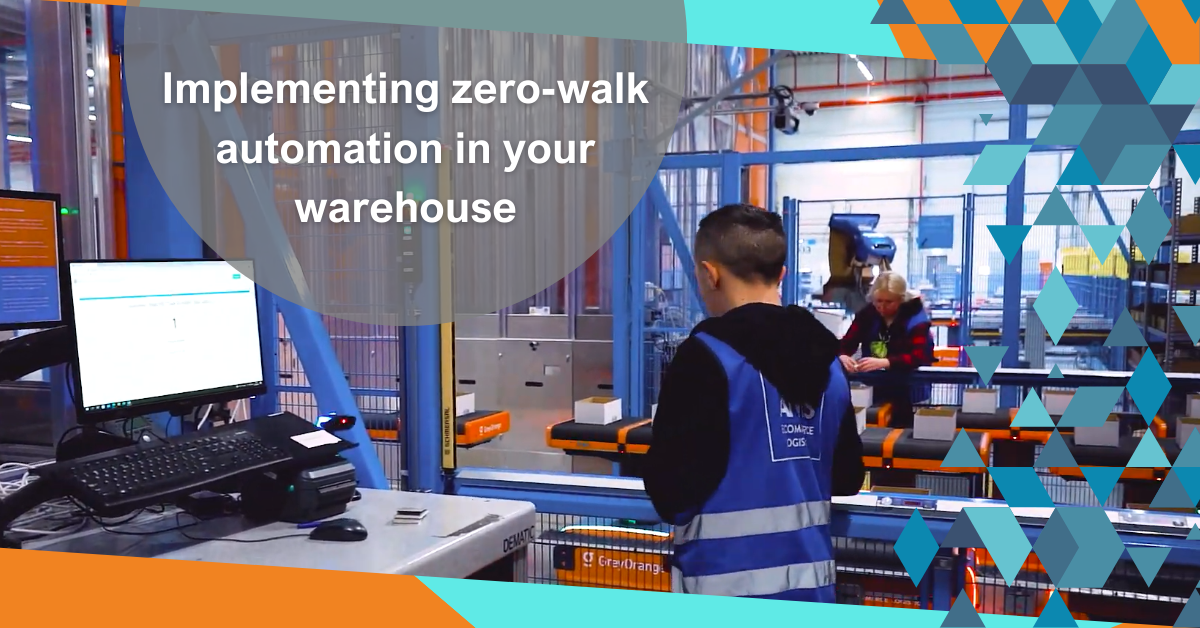


While it can be fun to count your steps, some occupations will take you above and beyond the recommended 10K. Case in point: warehouse workers typically walk 9-10 miles per day. Add the regular heavy lifting they do to the mix, and you’ve got a recipe for exhaustion.
A recent Wakefield Research survey found that 75% of warehouse workers said the physical strain of their work takes a higher toll on them than mental strain. They cited carrying, lifting, walking and traveling as the leading causes.
Exhaustion poses safety hazards, as it increases the likelihood of accidents in a warehouse. Plus, it slows down productivity. So, what can warehouses and fulfillment centers do to fix the problem? This blog will explore one possible solution: zero-walk fulfillment via warehouse automation.
At its core, zero-walk automation is a revolutionary approach aimed at minimizing or eliminating the need for human operators to physically traverse the warehouse floor to fulfill orders. Traditionally, fulfillment centers relied on a pick-and-pack model where workers navigated aisles to locate and retrieve items for order fulfillment. However, this approach is inherently time-consuming and prone to inefficiencies, particularly in large-scale operations.
Zero-walk automation seeks to overcome these challenges. With advanced robotics, artificial intelligence (AI) and sophisticated algorithms, automated systems bring the goods directly to the picker. Through the implementation of autonomous mobile robots (AMRs), robotic picking systems and intelligent storage solutions, warehouses can seamlessly orchestrate the movement of inventory items with precision and speed.
While every type warehouse automation will reduce worker fatigue, goods-to-person (GTP) solutions are the cornerstone of zero-walk environments. GTP revolutionizes the order fulfillment process by streamlining the flow of goods to operators stationed at designated workstations. Unlike traditional methods, where workers travel to retrieve items, GTP systems utilize automated mechanisms. They transport bins or totes containing requested items directly to the picker’s location.
This approach minimizes wasted time and effort associated with manual processes. It also optimizes order-picking efficiency by reducing travel distances and consolidating picking tasks. By leveraging GTP technology, fulfillment centers can greatly increase throughput, accuracy and operational agility.
Zero-walk automation relies on sophisticated storage solutions such as automated storage and retrieval systems (AS/RS). They efficiently manage inventory and facilitate rapid retrieval of items. By dynamically organizing inventory within the warehouse and optimizing storage density, these systems enable seamless integration with tote-to-person (TTP) or rack-to-person (RTP) solutions, ensuring the timely delivery of goods to picking stations.
Once the operator has completed the pick at their station, they could walk/roll the cartons, totes or bins over to the outbound conveyor. But there is a better, faster way to get the next part of the job done. With smart conveying and sorting robots, operators can directly pick into empty cartons or totes. The bot then intelligently navigates to the right induction point in the warehouse’s packaging system or station.
Anytime you have multiple types of agents (humans and robots) or systems (GTP, conveying and sorting) working together safely in the most efficient way possible, multiagent orchestration (MAO) comes into play. MAO enables the AI-driven coordination, optimization and execution of automation systems (even from different vendors), people and order fulfillment. It ensures that orders are accurate and throughput is maximized continuously.
RELATED READ: Orchestrating putaway efficiency: the symphony of smart intralogistics automation
A zero-walk approach offers a range of benefits, from increased efficiency and more accurate orders to safety and ergonomics improvements.
In conclusion, zero-walk automation is a significant advancement in the evolution of fulfillment center operations, and one that enhances worker health and well-being, efficiency, productivity, and flexibility. By leveraging robotics, AI and goods-to-person technology, businesses can transform their order fulfillment processes and fully optimize operations and throughput in the digital age.